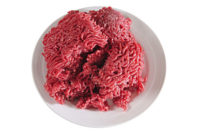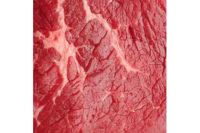Regulations & Legislation
Guide to FSIS sampling for Shiga toxin-producing E. coli

With the FSIS’ expanded sampling program for Shiga toxin-producing E. coli on bench trim, a prudent establishment should review its procedures as well as FSIS’ for any STEC testing.
Addressing STEC in your HACCP plan
Any HACCP plan for raw beef should address the potential hazard of STEC. Most purchasers have determined STEC is not reasonably likely to occur based on purchase specifications:
- Letter from supplier saying it uses interventions and STEC is addressed in its HACCP plan.
- The letter should include a provision on the supplier high event program, though the provision need not provide specifics on the program, nor require notification of an event.
- In light of the new “bench trim” Notice 81-13, the letter should also contain language that individually packaged products are not “commingled.”
- There should be ongoing verification by the supplier to support its programs. Most suppliers use a “check sample program” under which the supplier conducts periodic trim verification sampling for STEC and posts the results on its Web page.
Agreement on FSIS sampling — how conducted and product implicated
The agency has procedures on how to take samples under the various sampling projects. For example, with bench trim, Notice 81-13, the sample is to be taken after intervention(s). In the case of raw ground sampling, the establishment can “time shift,” and run the randomly selected product first or use an off-line grinder to make a minimum of 50 pounds.
On product implicated, the short answer is that all products which are not microbiologically independent from the sample are implicated by a positive. Ways to demonstrate the microbiological independence include: robust product sampling program; use of interventions; avoiding use of common source raw materials in multiple lots; and, for bench trim, demonstrating the beef used in the product was not commingled.
Please note, the time to resolve any issues is before a sample is taken and sent to the laboratory. An establishment should respectfully appeal if there are disagreements with FSIS personnel.
Reporting results
For STEC, FSIS analysis has three steps. First, the sample is run through a PCR-based method (FSIS may also use a lateral flow method). If the result is negative, FSIS will report this result through LIMS-Direct as “negative” or “acceptable.” If the PCR is positive, the result is reported as “potential.” The analysis will continue with the cultural confirmation method. During the analysis, if the cells appear to be an adulterant STEC, the agency will report the sample as “presumptive” otherwise the result is reported as “acceptable” or “negative.” If the cultural analysis detects an adulterant STEC, the sample is reported “positive.”
In the case of E. coli O157:H7 testing, FSIS analyzed 18,950 samples in 2013. There were 209 potentials, of which 45 were presumptive, and of those, 39 confirmed positive.
A positive
If a positive is reported, FSIS will issue an NR (in most cases); schedule a Food Safety Assessment; and conduct follow-up sampling.
The establishment should respond immediately to a positive report: (1) ensure the proper disposition of the all product implicated by the sample and (2) reassess its HACCP plan.
Above all, if you have questions or concerns, resolve them before a sample is taken and make sure you know what’s implicated and hold it!
Looking for a reprint of this article?
From high-res PDFs to custom plaques, order your copy today!









